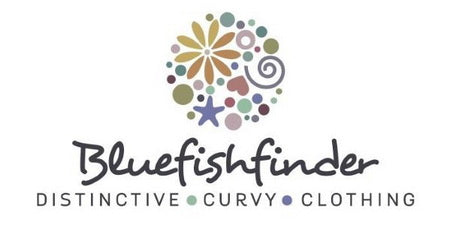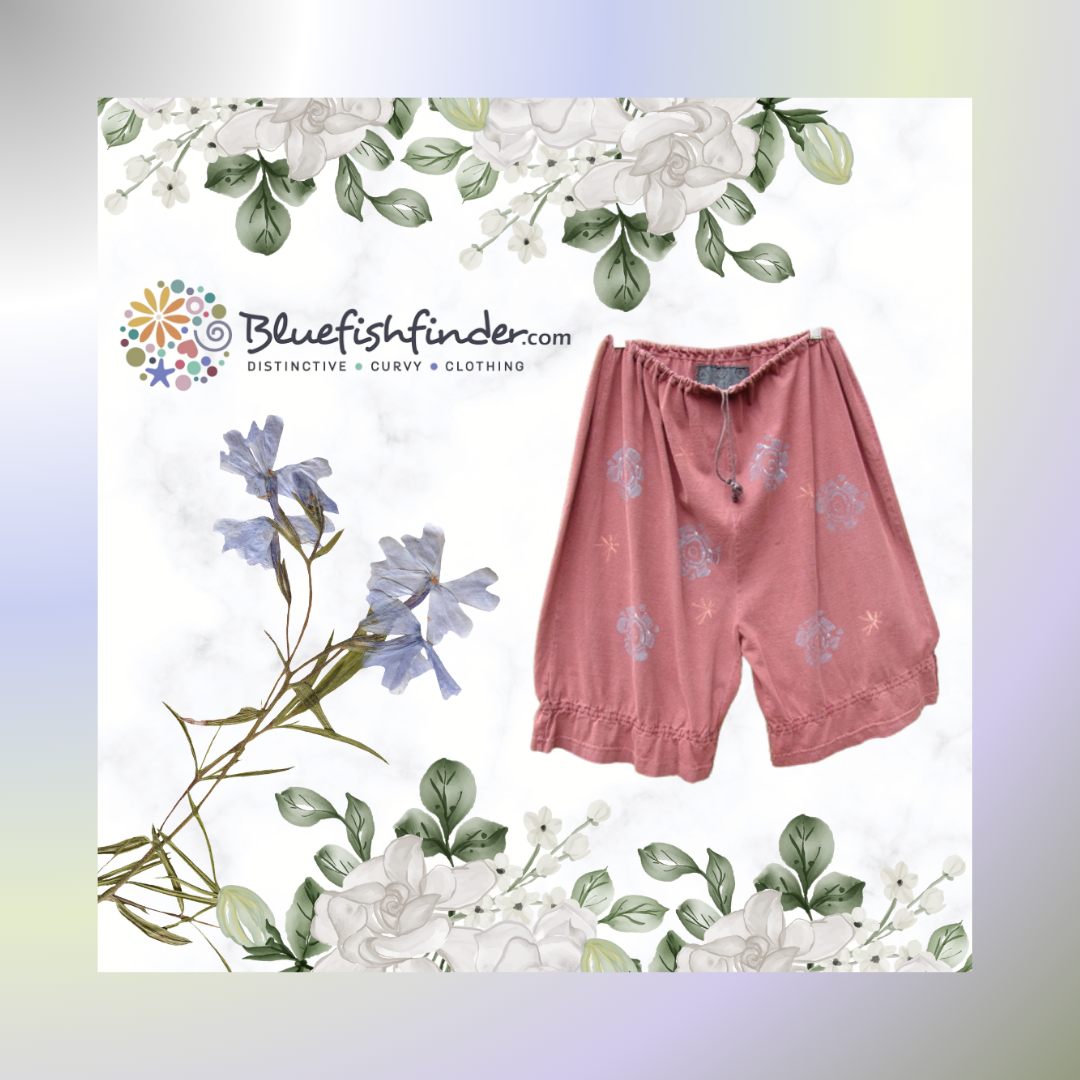Blue Fish Clothing 1991 ~ Line Sheets and Other Stuff
“Each piece of clothing tells a story of powers through ideas and memories in symbolism of the past, the present, and the unknowable next ideas of sharing and stories and pictures.” ~ Excerpt from the only 1991 Catalog
A basic line sheet of 28 100% cotton jersey styles (page 1) is one of the earliest extant documents from Blue Fish from 1991. These styles were produced for the entire year in the catalog (pages 2-5) in 16 colors. The operation was producing out of the studio in Taos, New Mexico and the work was highly customized. The prints have a strong southwestern theme in style ~ bright turquoise and orange, with very bold and playful colors. Catalog buyers were encouraged to choose their print and color combinations. “More prints available, just ask!” Although the sizing was “One Size Fits Most,” the styles were generally designed to be very big and baggy. Shaping was achieved by tying styles up with ‘rippies,’ ribbons, etc. The style numbers were very simple, mostly 2 digits originally starting with style #10. The tee shirts were given a style number that they would retain for many years - #125 for short/sleeve, and #135 for long sleeve. These early style numbers would be later incorporated into the overall style number as a ‘pattern’ number. Hence you later see 1JP135 for the long sleeve tee.
The basic line was produced for the catalog, but the seasonal line was offered to wholesale accounts. Pages 6-8 are line sheets for the Fall lines of 1991 as they were offered to wholesale accounts. Note that the minimums were high for each style. All of the wholesale orders were shipped in assorted colors and prints. The studio in in Taos would focus on the custom catalog production, and the studio in Frenchtown would focus on this wholesale production with less customization. It is not clear whether there were seasonal wholesale lines prior to the Fall of 1991. It is probable that 1991 was the first year a catalog was offered to the general public. Previous wholesale lines may have been non-seasonal and simpler in presentation (for instance, just tees). The fall wholesale line was presented in a slightly heavier weight of cotton jersey and a 100% thermal jersey call ‘waffle.” This was the first variance for the company from the cotton jersey fabrication. The waffle offered in 1991 is a bit flatter than the more recent thermals.
These early styles are very boxy and oversized. It is easy to see that they are not far removed from the first tee shirts that Jen set up and sewed back together with her original inspiration. The colors were earth tones and the garments were garment dyed. The environmental focus was not yet very strong. The cotton was not organically grown. Many of the styles featured drapery draw cords i.e. thin strings encased in binding sewn inside a skirt or bottom to gather the skirt up to the top of the casing by tugging on the cords.
Pages 9-16 are a ‘printer’s map from 1991. It was a hand out to guide the studio artists printing the line. With new artists being trained and a larger quantity of garments being sold based on the appearance of a sample, it became necessary at the Frenchtown studio to create direction for the artists to maintain some uniformity to the line.


Comments
To the bluefishfinder.com webmaster, Thanks for the well-written and informative post!
Yep back in the days! Thanks for posting Ann!
16 color choices?! Oh, my!